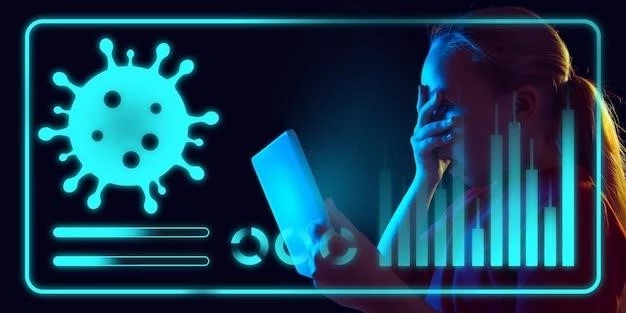Introduction to Serious Digitalis Intoxication
Digitalis, a medication derived from the foxglove plant, is commonly used to treat heart conditions. However, excessive intake can lead to a serious condition known as digitalis toxicity. This article explores the therapeutic uses of digitalis and the potential risks associated with its toxicity.
Overview of Digitalis as a Medication
Digoxin, derived from the foxglove plant, is used to treat heart conditions like heart failure and atrial fibrillation. The recommended serum concentration range has decreased over time. Diagnosis relies on signs, symptoms, EKG, and lab findings. Drug interactions are common contributors to toxicity, which can lead to various cardiac and systemic manifestations.
Digoxin toxicity can present acutely or chronically, with symptoms ranging from gastrointestinal issues to visual disturbances and altered mental status. The treatment goal is to stabilize the patient, eliminate excess digoxin, manage symptoms, and may involve discontinuing medication, use of digoxin immune Fab, or activated charcoal administration.
Incidence of digitalis toxicity has decreased due to reduced usage, improved monitoring, and awareness of drug interactions, but it remains a concern. Digitalis poisoning occurs when too much medication is consumed, leading to symptoms like confusion, irregular pulse, nausea, and vision changes. Identifying and managing toxicity promptly is crucial in preventing severe complications.
Historical Background of Digitalis Use in Medicine
The use of digitalis in medicine dates back to 1785 when Sir William Withering documented the therapeutic benefits of the foxglove plant, Digitalis purpurea, in treating heart failure. Over two centuries later, cardiac glycosides like digoxin are still utilized in managing heart failure and atrial arrhythmias. Despite a decline in clinical use, these medications remain significant in cardiovascular treatment.
Digoxin, a cardiac glycoside derived from the foxglove plant, exerts positive inotropic effects and helps manage systolic dysfunction in congestive heart failure patients. It also acts as an atrioventricular nodal blocking agent for atrial tachydysrhythmias. While the incidence of digitalis toxicity has decreased due to reduced usage, challenges persist in diagnosing and managing toxicity effectively.

Clinical Presentation of Digitalis Toxicity
Digitalis toxicity can manifest as general systemic symptoms like weakness, anorexia, nausea, and specific cardiac issues such as arrhythmias and conduction disturbances. The clinical scenarios range from acute accidental ingestion in young adults to chronic over-ingestion in elderly patients with various symptoms and EKG findings.
Acute vs. Chronic Intoxication
There are two distinct clinical scenarios linked to digitalis toxicity⁚ acute intoxication, often seen in young individuals as accidental or intentional overdose, characterized by symptoms like hyperkalemia, bradydysrhythmias, and AV blocks. In contrast, chronic intoxication, more common in the elderly, presents with various symptoms and EKG abnormalities due to prolonged over-ingestion of digoxin.
General Systemic Symptoms of Digitalis Toxicity
Patients with digitalis toxicity may experience a range of general systemic symptoms such as weakness, anorexia, nausea, vomiting, and altered mental status. Visual disturbances like changes in color perception and mental changes can also occur. These nonspecific symptoms play a crucial role in the clinical presentation of digitalis intoxication.
Specific Cardiac Arrhythmias and Conduction Disturbances
Digitalis toxicity can lead to specific cardiac arrhythmias and conduction disturbances. Patients may experience a range of rhythm abnormalities, including bradyarrhythmias, atrial tachyarrhythmias, and heart block. Conduction disturbances such as varying degrees of atrioventricular block are common findings in digitalis-intoxicated individuals. These cardiac manifestations require prompt recognition and appropriate management to prevent more severe complications.
Diagnosis and Management of Digitalis Toxicity
Diagnosing digitalis toxicity relies on a combination of clinical findings, EKG changes, and serum digoxin levels. Management involves stabilizing the patient, removing excess digoxin, and treating symptoms. Options include discontinuing medication, using digoxin immune Fab, and monitoring potassium levels while closely following cardiac rhythm.
Diagnostic Approaches and Confirming Digitalis Intoxication
Diagnosing digitalis intoxication relies significantly on clinical signs, symptoms, typical EKG changes, and serum digoxin levels. A critical aspect of confirming digitalis toxicity involves identifying factors contributing to its occurrence, with drug interactions playing a common role. The presence of specific symptoms and EKG abnormalities helps in confirming the diagnosis and initiating appropriate management strategies.
Treatment Options for Digitalis Toxicity
The treatment of digitalis toxicity involves stabilizing the patient, eliminating excess digoxin, managing symptoms, and addressing potential drug interactions. Discontinuation of medication, use of digoxin immune Fab, and close monitoring of potassium levels and cardiac rhythm are common approaches. Activated charcoal may be considered in cases of acute ingestion, while severe cases may require digoxin-specific antibody fragments to bind excess digoxin for elimination.
Role of Digoxin-Specific Antibody Fragments in Severe Cases
In severe cases of digoxin toxicity, digoxin-specific antibody fragments are crucial in treatment. These fragments bind to free serum digoxin, facilitating increased renal excretion. When conventional treatment methods fail to stabilize the patient, administering digoxin-specific antibody fragments can be life-saving. Monitoring digoxin levels and clinical symptoms is vital for determining the efficacy of this intervention.

Prevalence and Trends in Digitalis Toxicity
The incidence of digitalis toxicity has decreased in recent years due to reduced usage, improved monitoring of drug levels, and increased awareness of potential drug interactions. While advancements have been made in managing cardiac glycoside toxicity, challenges still exist in promptly identifying and effectively treating cases of digitalis intoxication.
Incidence Rates and Decline in Recent Years
In recent years, the incidence of digitalis toxicity has reduced due to decreased usage of the medication, improved monitoring techniques for drug levels, and heightened awareness of potential drug interactions. Despite advancements, challenges persist in promptly diagnosing and effectively managing cases of digitalis intoxication.
Factors Contributing to Continued Challenges in Managing Cardiac Glycoside Toxicity
Managing cardiac glycoside toxicity remains challenging due to various factors. One key factor is the overlap of digoxin concentrations between symptomatic and asymptomatic patients, making diagnosis complex. Additionally, the insidious nature of chronic poisoning with non-specific symptoms adds to the difficulty in timely identification and appropriate management of digitalis intoxication.
